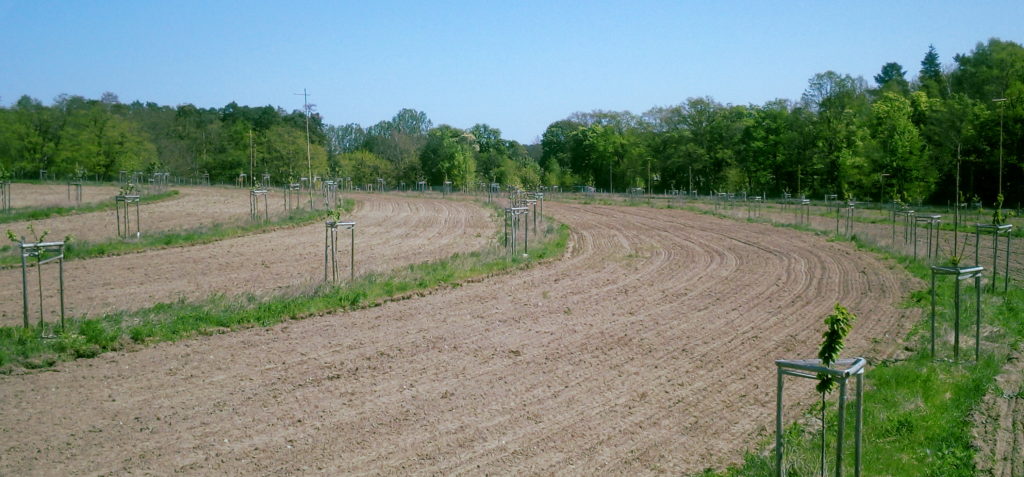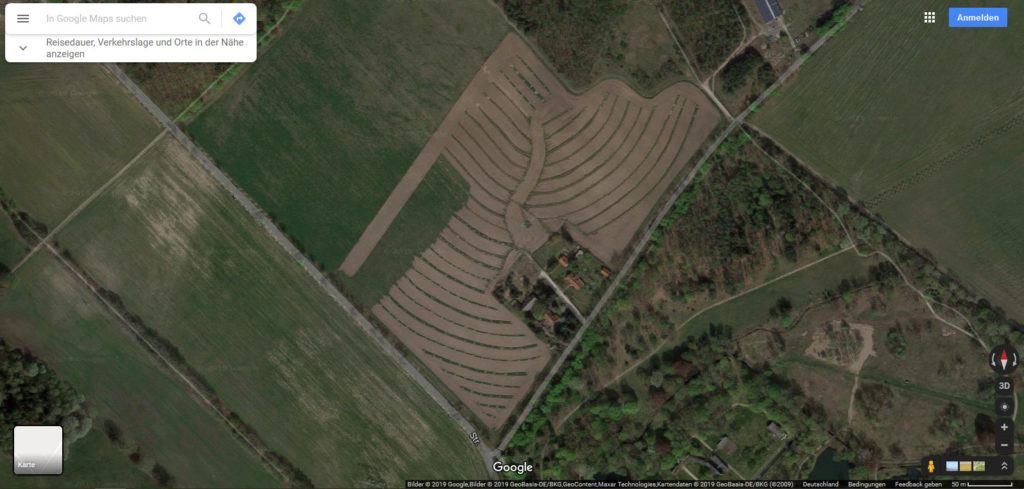 With my project baumfeldwirtschaft.de and the help of engaged farmers, we planted 100 times more trees in their croplands than there were before. And these trees – chestnuts, nuts and fruits – produce staple foods! Furthermore, the soil now is safe from erosion, the humus isn’t destroyed anymore but more is built up (even more carbon put in the soil), water is retained and accessible in dry summers, so that in the end even the crops grown between the trees deliver higher yields.
With my project baumfeldwirtschaft.de and the help of engaged farmers, we planted 100 times more trees in their croplands than there were before. And these trees – chestnuts, nuts and fruits – produce staple foods! Furthermore, the soil now is safe from erosion, the humus isn’t destroyed anymore but more is built up (even more carbon put in the soil), water is retained and accessible in dry summers, so that in the end even the crops grown between the trees deliver higher yields.So we demonstrated here in central Europe, right outside Berlin, that it is possible to reach the 1.5° goal AND enhance food security, rural livelihoods, ecosystem services, water retention, biodiversity etc. It is possible – if we implement such agroforestry systems with tree crops on landscape scale.
Think about what you eat and buy… Maybe you can support local farmers in planting tree crops?
Sources:
Bastin, Jean-Francois, et al. 2019. The global tree restoration potential. Science. 2019, Bd. 365, 6448, S. 76-79.
IPCC. 2019. Climate Change and Land – An IPCC Special Report on climate change, desertifcation, land degradation, sustainable land management, food security, and greenhouse gas fluxes in terrestrial ecosystems. https://www.ipcc.ch/report/srccl/ Geneva, Switzerland : IPCC, 2019.
—. 2018. Global warming of 1.5°C. An IPCC Special Report on the impacts of global warming of 1.5°C above pre-industrial levels and related global greenhouse gas emission pathways, in the context of strengthening the global response to the threat of climate change. Geneva, Switzerland : IPCC, 2018.
Zomer, R.J., et al. 2016. Global Tree Cover and Biomass Carbon on Agricultural Land: The contribution of agroforestry to global and national carbon budgets. Nature Scientific Reports. 2016, 6 (29987).

